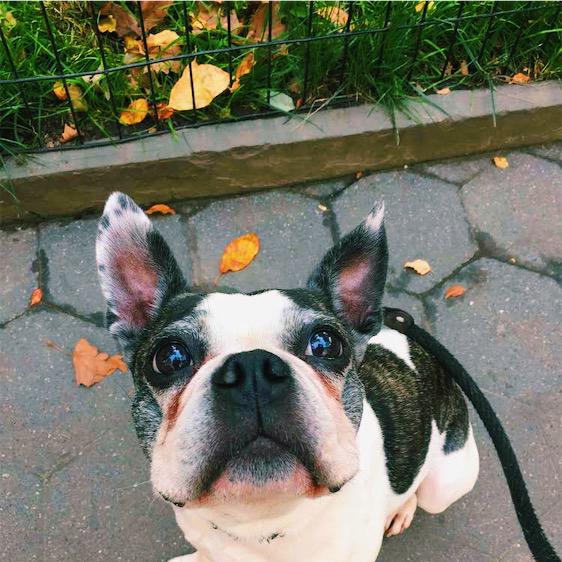Somehow they always know. Even if you avoid the V-E-T word and pretend to be taking a trip to the dog park, somehow they always manage to figure out this trip is going to be awful. It may seem silly that your dog is afraid of going to the vet, but people certainly don’t rejoice in going to the doctor. Think of going to the doctor’s office as a child. You are in an unfamiliar place, where someone pokes and prods you, and you don’t understand that it’s for your own good. The highlight is that lollipop at the end, but it sure is difficult to get that far even if you know the lollipop is coming. That’s exactly how many dogs feel about the veterinarian’s office, and he or she doesn't even get a lollipop.
Why is your dog afraid of going to the vet? For some people, they can answer this easily. If your dog had a traumatic experience and needed to go to the vet, he or she will associate the vet with pain, not with getting better since that didn’t come until later at home. Puppies get spayed or neutered, shots, and inspected for overall health while still very young. They associate the vet with pain or discomfort and an assault on their senses. Even as humans, the vet’s office can be a smelly, loud environment, and that is amplified for our dear pets. There are usually other dogs nearby too, and they are probably just as afraid, putting your dog on high alert. This makes for a scary trip that can haunt your dog for years.
However, this doesn’t have to continue to be the case for your dog. To make the actual trip less stressful, you can practice veterinary check-up procedures regularly at home. This can include having your dog stand still while you lift each leg, inspecting your dog’s paws, feeling the belly and chest with both hands, looking inside the ears, touching your dog’s face around the eyes (be careful not to get too close!), and checking your dog’s teeth. Start slow and don’t try to do everything all at once or in the same sitting. While this mock inspection gets your dog used to being touched, it also gives you a chance to observe his or her behavior and to modify your own. If your dog is particularly sensitive about his ears or about her mouth, that is something to note to your vet’s office. They may have other techniques for dealing with such reactions that might ease your dog’s discomfort. You can practice remaining calm and reassuring without being too anxious. If you are upset or waiting for your dog to react negatively, your dog will know something is up. Now, not only is your dog afraid of getting poked, he or she is also afraid that something is wrong with you.
Positive reinforcement is the key to all types of dog training. Going to the vet is no exception, so be prepared with treats, belly rubs, and to remind your dog to be a “good girl” or “good boy.” Keep your dog on a leash at all times and keep him or her close by. Try not to act fearful or tense as this will only add to your dog’s panic. If you notice your dog growling, hiding under the chair or behind your legs, whining, snapping, or trembling, these are all signs that your dog is frightened and may act out. Monitor your dog carefully and inform the vet staff if you are concerned. Most offices are trained to deal with these situations and can advise you on how to best handle the situation, or they can inform you of modifications to make. It is always good to make a point to a vet if you are bringing in a dog with any of the following concerns: doesn’t liked to be touched in certain spots such as the paws, has never been to a vet, you don’t know your dog’s full medical history (usually in the case of adoption), you are bringing your dog to a new vet, or your dog has negative reactions to strangers and/or other animals. Sometimes there are other factors at play that your vet will need to be aware of in order to give your dog the best possible care.
Another thing you can do between vet visits to ease the tension is to take non-medical trips to the vet. Stop by to say hello to the reception workers or just to sniff around. You can teach your dog that not every visit to this place will involve needles. If a vet visit becomes part of a routine instead of a once-a-year fiasco, your dog will gradually become calmer and used to the routine.
Note that not every vet visit will be a disaster. When your dog has to go to the vet for a medical concern such as an upset stomach or a limp, he or she is already not feeling well and more likely to be sensitive to sounds, smells, and touch. One bad visit does not automatically mean bad visits in the future. If you make an effort to get your dog used to the procedures at the vet’s office, get used to visiting the location, and stay as calm as you can yourself, your dog will understand a bit more of what is to be expected and that he or she has to go to the vet.
Picking up and dropping off your dog at the vet is one of the services we offer here at Swifto, and the cost is based on the duration of the walk to or from the vet. To add a drop off or a pick up, just add a regular walk in the system and check to indicate that the walk “ends at another location.” You will need to include your vet’s office details there. Looking to book a dog walk?
By Callie T.


